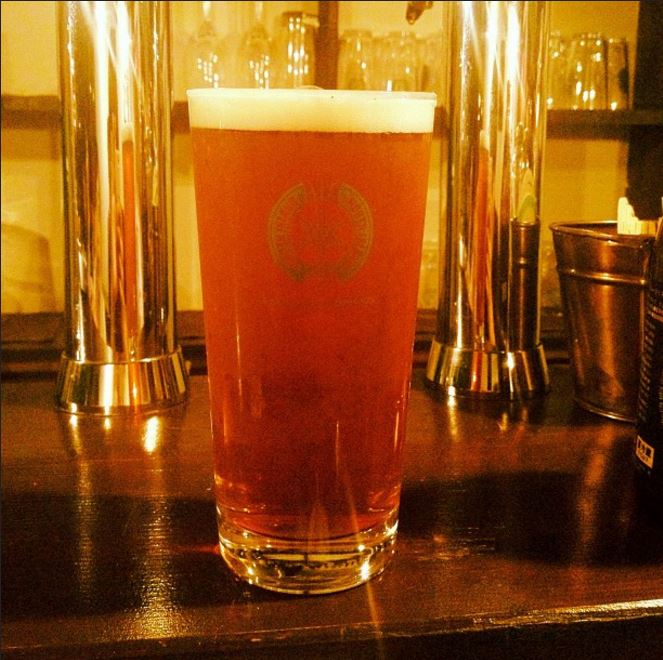By Brian McKay
I was planning to write about keeping your startups' accounting zen, but that is a topic for another day. Let's focus on the beer I had tonight instead.
I love a good beer. Truly. This was the last keg of an IPA that was perfectly balanced between hoppiness and taste. It is a spectacular beer and the local bar has the last keg. Unfortunately, the startup brewery that produced it is now gone. Honestly, I had never heard of them before drinking this beer and am slightly sad to see them go. On scale with other IPAs, they really compete. I will forever relish the chance I had to drink this last keg of their IPA.
They made a superior product, which is awesome, but they messed up in marketing. I am a beer drinker and fiercely loyal to local brands. How is it I never heard of these guys? Their tap handle was seriously cool and the beer was great, but I had no clue who they were until I ventured to try a taster.
It leads me to one thought; crowded spaces can be tough on disruptors. The inherent goal of a disruptor is to take the customers that have been left behind. I have had many IPAs that were good but this one was exceptional and truly distinguished itself against others. It was a beer that left competitors in the dust and captured my attention. So why is the company now gone?
Marketing, marketing, marketing. It matters not if you have the world’s greatest product and the coolest tap handle around (I did seriously love their tap handle), but it does matter how you then bring your customer base to you. You are attracting those left behind, how do you do it?
A disruptor has a clear vision of the customers that others have left behind. They might have an amazing product for them to migrate to, but without good marketing, their customer base has no clue they even exist. My experience tonight brought me to a superior product that myself and others would routinely patronize had we of known it was even there. I must admit that while an improvement in beer isn’t actually analogous to disruption, the point is still that same; market yourself. Had this brand done so they might still exist.
So how do you draw attention? Marketing in today’s environment involves far more than the market studies that once drove ad agencies. You now live in the age of reality TV and the Kardashians. Nothing is totally out of bounds at this point.
Your marketing needs to set you apart. The concept of puffery is no longer something just for car dealerships. 21st Century advertising corresponds to and tries to define lifestyles. Exceptional products no longer matter as much as identity.
Sure, I could have had a Stone IPA, which is a spectacular beer out of San Diego, but I chose the last keg of a beer I eventually found to be better. Stone is a well-known and exceptional product that defines my choice as to good taste. The last keg of what I had tonight was great but it was now gone. Had it existed tomorrow and beyond, I would have gladly left my perennial choice that is the bigger brand.
Quality is truly awesome in today’s marketplace, but the allusion of quality might actually be more important. The beer I tried tonight was exceptional, but my second choice (Stone) is also really good. Guess which one will be around tomorrow? A zenruptor strives for the best in quality but also realizes the marketing to their niche matters. In this instance, a zenruptor knows that creating a feel of their commitment to quality in their marketing is just as important as actually providing it.
Today’s craft beer market might actually make the appearance of originality seem on par with quality. It is crowded space indeed.
A great study in zenruption, is the rise of Grey Goose Vodka. Grey Goose came to define the premium liquor genre in the late 90’s and early 2000’s. The brand can honestly be credited with redefining what the term “top shelf”, means. It made its creator, Sidney Frank, a billionaire and was honestly never the “best tasting vodka” it claimed to be. Ironically, Kirkland vodka from Costco was actually rated as the best tasting vodka. Grey Goose was good but not quite there The company did market well and created a new category in the process. It was the very ideal of a zenruptor carving out a new niche, being good enough and attracting those the current market isn’t serving.
So Grey Goose, a decent vodka, achieved a designation that made its fifths of vodka worth $35 dollars apiece, but the great IPA I had tonight is done? That stinks.
I love a great product, but if you can’t market it as such, it simply doesn’t exist. Plato once said that a chair doesn’t exist until you see the chair and acknowledge it. Your product or service is the same way. Until you present it as superior, it will not exist as such.
The dichotomy of a zenruptor is that we are humble in management and product creation but more than willing to display our superiority and differentiation (the proper term is je ne sais quoi) in our marketing. Once an even near superior product has been created, today’s market demands that it must be marketed as such.
The hope is never to be that last keg of superior IPA I had tonight.
Be humble, be bold and go zenrupt some business.
Brian McKay is a co-founder of zneruption and has his MBA from Boise State University. He shed a few tears tonight when he realized that was the last keg of that IPA. Yes, Brian can be a little over emotional at times.
Feature photo courtesy of Flickr, under Creative Commons Attribution-Noncommercial license


